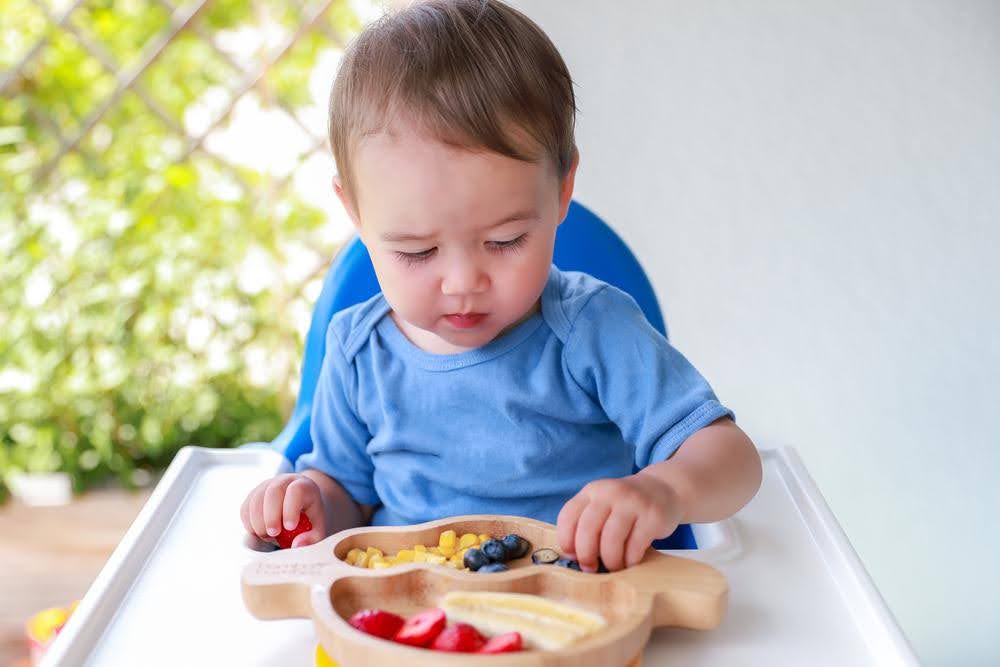Feeding time with your little one doesn’t have to be a battleground. Whether you’re navigating the tricky waters of introducing solids or simply trying to maintain a routine, it may take some trial and error to find an approach that works for you. Here are five effective strategies to transform mealtime into a joyful bonding experience for both you and your baby.
Don’t Force Baby to Feed
Recognize that babies, like adults, have fluctuating appetites. Pressuring them to eat more than they want can create negative associations with feeding or exacerbate issues like gas and spit-up. Pay attention to their hunger cues and respect their signals to stop, fostering a positive feeding environment.
Your baby may not want to eat if they exhibit the following behaviors:
- Turning Away or Arching Back: If your baby turns their head away or arches their back during feeding times, it could be a sign of disinterest or potentially gas.
- Clenched Mouth: A baby who keeps their mouth tightly shut is likely signaling they’re not ready or willing to eat at the moment.
- Crying or Fussiness: While this can indicate a variety of needs, persistent fussiness or crying when offered food may suggest they’re not in the mood to eat, possibly because of feeling gassy or uncomfortable. If crying is excessive, call your doctor so they can assess what could be going on.
- Pushing Food Away: Older babies might physically push food or bottles away to show they don’t want to eat.
- Lack of Enthusiasm: A noticeable lack of excitement or engagement during mealtime can indicate they’re not interested in eating, perhaps due to uncomfortable gas.
- Spitting Up Frequently: While it’s typical for babies to spit up a bit, frequent spit-up can be a sign of overfeeding, discomfort, or not wanting to eat more. It may also indicate gas issues that make eating unpleasant.
- Decreased Sucking: If your baby starts sucking enthusiastically but then quickly loses interest and stops sucking, it might be because they’re full or have gas. It could also indicate teething discomfort, the wrong size bottle nipple, or they may just be tired.
If you notice these behaviors, it’s important to try and address the issue, like burping your baby to ease gas, and to follow their cues for when they’re ready to eat. Always consult with a pediatrician if you have concerns about your baby’s feeding or signs of discomfort.
Support Baby’s Interest in Self-Feeding
As your baby grows and begins to explore self-feeding, try the following strategies to encourage this exciting milestone.
- Introduce Baby-Friendly Utensils, Dishes, and Cups: Provide spoons and forks designed for little hands. These should be easy to grasp, soft-tipped to avoid injury, and ideally, slightly curved to help them scoop food more successfully. Use dishes and cups that won’t break if they get dropped on the floor.
- Start With Easy Solid Foods: Begin with soft, easy-to-grasp solid foods that they can pick up and bring to their mouth successfully. Steamed vegetables cut into sticks, small pieces of very ripe and soft fruit, or slightly over cooked plain pasta are great starting points.
- Create a Positive Environment: Keep mealtime relaxed and pressure-free. Your enthusiasm and positive reinforcement can boost your little one’s confidence and willingness to try self-feeding.
- Model Eating Behavior: Babies learn by imitation. Eat together when possible, and show them how you use utensils, chew, and enjoy your food.
- Practice Safety First: Always supervise your baby during meals to ensure they’re eating safely and to intervene if they show signs of choking. You’ll also want to monitor for allergies. As you introduce new foods, watch your baby closely for reactions, such as rash, difficulty breathing, or gastrointestinal discomfort. Introducing foods one at a time and waiting a few days before adding another can help identify potential allergens more easily.
Let Baby Make a Mess
Welcome the chaos at the dining table as a sign of progress and discovery. Mealtimes serve as a multi-sensory adventure for babies, from feeling the textures of different foods to learning how to use utensils. A baby covered in food is usually a sign of a joyful, inquisitive explorer engaging with their meal. Keep the wipes handy and take heart that your little one is developing fine motor skills and hand-eye coordination.
Make Mealtime a Family Affair
Whether they sit on your lap or in a high chair, involve your baby in family mealtimes as much as possible. Your little one will feel included in the family dynamics, strengthening emotional connections from an early age. Eating together provides a sense of belonging and unity. It also:
- Promotes Social Skills: Observing interactions, conversations, and the nuances of dining together helps your baby learn valuable social cues and manners. It’s an early lesson in communication and etiquette.
- Encourages Healthy Eating Habits: Babies are great imitators. Watching siblings and parents enjoy a variety of foods can pique their curiosity and willingness to try new tastes and textures.
- Enhances Learning Opportunities: Mealtime is an ideal setting for babies to learn about different foods, practice reaching for items (even if they can’t eat everything yet), and explore the concept of cause and effect (like what happens when they drop a spoon).
- Facilitates Language Development: Listening to conversations around them, even if they don’t understand the words yet, helps babies in language acquisition. They pick up on tones, patterns, and the rhythm of speech.
Avoid Electronic Distractions
Turning off TVs and putting away phones or other electronic devices during mealtime ensures that the focus remains on enjoying the food and engaging in conversation with family members. Creating a screen-free zone at the dining table encourages more mindful eating practices and enhances the quality of family interactions.
Nurturing Happy Mealtime Moments
Peaceful mealtimes start by responding to your baby’s needs and fostering an environment that encourages interaction and exploration. By supporting self-feeding and embracing the learning process—and the messiness—that comes with it, you’re setting the stage for healthy eating habits and creating cherished memories. Approach these moments with patience and talk to your pediatrician about any concerns you may have about your baby’s eating.













